
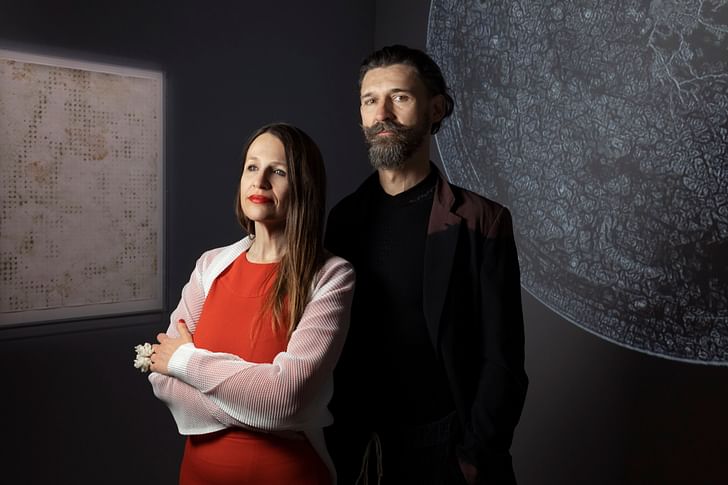
Against the backdrop of a frenzied AI discourse dominated by end-product tools such as ChatGPT and Midjourney, Claudia Pasquero and Marco Poletto articulate a refreshing call to adventure. The two ecoLogicStudio founders have built their professional and academic careers at the intersection of computation and biology, allowing them to articulate a vision of artificial intelligence that, in their words, "is more like a slime mold, a spider's web, a microalgae colony, or a mycelium network." Here, the computational and biological find common ground in their use of patterns as meta-language; a commonality that, when pushed, invites both human and non-human designers to shape the built environment as an organism itself rather than a static entity enlivened only by our own mechanics.
For Pasquero and Poletto, this is no theoretical exercise. ecoLogicStudio has already won wide acclaim for its real-world applications of ecological systems in the built environment while also articulating more futuristic visions that "shake us from our anthropocentric indifference to the beautiful intelligence of our living planet." Both are set out in their latest book Biodesign in the Age of Artificial Intelligence: Deep Green, published in July 2023 by Routledge.
In June 2023, Archinect’s Niall Patrick Walsh spoke with Pasquero and Poletto about their background, their work at ecoLogicStudio, and the perspectives on computation, ecology, and intelligence that have shaped their careers. The discussion, edited slightly for clarity, is published below.
This article is part of the Archinect In-Depth: Artificial Intelligence series.
Niall Patrick Walsh: Could we begin with an introduction to the various roles you both hold across design and education?
Claudia Pasquero: My time is divided mostly between research and academia. I am a Professor of Landscape Architecture at the University of Innsbruck, where I direct the Institute of Urban Design. I also founded the institution’s Synthetic Landscape Lab, which operates at the intersection of landscape and architecture to engage with planetary transformation in the context of climate change. In London, where we are based right now, I am a professor at the Bartlett UCL, where I direct the Urban Morphogenesis Lab.
Beyond academia, I am a co-founder of ecoLogicStudio where I focus on research and development and the practice’s connection with academia. I ask what research emerging from academia can be applied and tested through practice, which speaks to the emphasis our practice places on being able to integrate research into practice step by step.
Marco Poletto: I’m the co-founder of ecoLogicStudio alongside Claudia. I’ve been teaching with Claudia for approximately 15 years, and for the past seven years have dedicated myself to both ecoLogicStudio and to the creation of the Photosynthetica consortium, which is concerned with the scalability of some of the solutions and innovations that have emerged from ecoLogicStudio. I also hold a postdoc research position at the University of Innsbruck, but a majority of my time is dedicated to practice and design innovation.
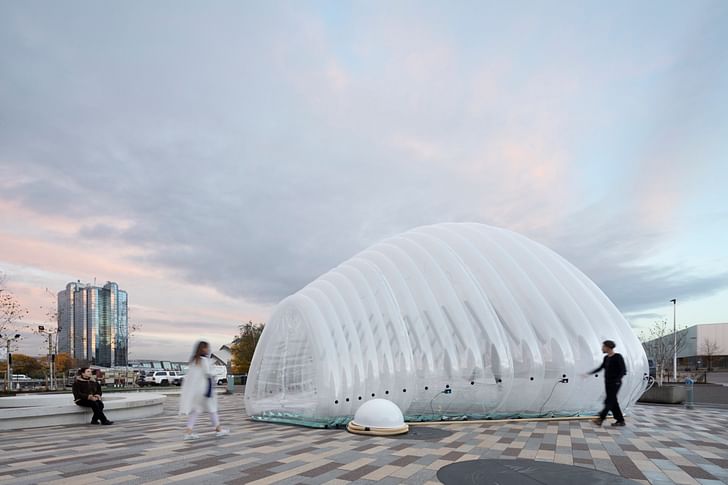
Your work at ecoLogicStudio sees an intriguing infusion of biology and computation. Before we talk about your present work, could you both provide insight into how these two topics emerged in your lives and careers to become so central to your work?
Claudia: This stems from our backgrounds in both scientific and artistic knowledge. We both studied architecture at the AA and engineering in Turin, and I also attended drama school. Turin is a city with strong technological and artistic backgrounds, such as the Baroque architect Guarino Guarini who engaged heavily with geometry, mathematics, and the abstraction of nature. We were also influenced by our encounters with Gianni Vattimo, a well-known Italian philosopher who ran seminars at the engineering school in Turin, specifically on the relationship between technology, philosophy, and art. We also discovered Gregory Bateson and his book Steps to an Ecology of Mind, which was the inspiration for the name of our studio. By the time we arrived at the AA, the work of figures such as Vattimo and Bateson was inspiring conversations around a form of architecture that engaged science and biology on a deep level, which further propelled our interests in the field.
Our computational interests emerged in tandem with this. In cybernetics, you work with both rational languages and meta-languages. These meta-languages have patterns that somehow straddle the natural and artificial. In that sense, biology and computation actually merge together in their tendency to express themselves through patterns rather than verbal logic or languages such as Italian and English.
In cybernetics, you work with both rational languages and meta-languages. These meta-languages have patterns that somehow straddle the natural and artificial. — Claudia Pasquero
Marco: Yes, when we were in Turin, we were already exposed to this encounter of technology, innovation, nature, and computation. When we moved to London, we became involved in conversations that entertained the idea of infusing architecture with real-life organisms and microbiology. At the other end was this world of digital and computational technologies that exploded onto the art and architecture scene at the beginning of the millennium.
This intersection became our journey. We found ourselves deploying tools and techniques inspired by this intersection which allowed us to understand and question the role of the designer in the creative process. Where is the creative process located? Is it in our heads? Is it in an expanded field? What are the possible futures for this intersection? These are all questions that we entertain in the studio.

You mentioned Photosynthetica earlier, a system that also occupies a large portion of your latest book. For those unfamiliar with the system, could you give an overview in your own words?
Marco: Yes, Photosynthetica could be described as a system that sits between architecture, ecology, and computation. We dedicated a large portion of the book to it because it has been such a central line of inquiry for us since we first engaged with it in 2006. The system began as an engagement with microorganisms, microalgae, and the creation of an artificial habitat for them to grow within the built environment. The essence of Photosynthetica is to address the urban microbiome. Such biomes exist in every city but often go unseen because it sits outside of the design discipline. Our focus was to design the urban microbiome in a way that incorporated the intelligence of these organisms, which in some cases have evolved over billions of years to perform extraordinary things such as breaking down pollutants, capturing CO2, or breaking down substances that are almost impossible to recycle.
Step by step, we traveled on this journey of developing both the technology and its applications. Typically architecture operates in individual products rather than entire systems, and so we found ourselves blurring the boundaries between how an artist, architect, and industrial designer might work. Our goal was to create a system, and series of products within that system, which were consistent with the philosophical position Claudia described earlier but also become increasingly technically and technologically sophisticated.
We began to build a new landscape of the urban microbiome; a photosynthetic landscape that demonstrates the possibilities of embedding microorganisms in the built environment. — Marco Poletto
Creating Photosynthetica also meant seeking out as many scenarios as possible to test the system in an architectural context. We’ve engaged the system as a product in a singular space, as exhibitions and pavilions, as facade components, and as entire building functions. Through this, we began to build a new landscape of the urban microbiome; a photosynthetic landscape that demonstrates the possibilities of embedding microorganisms in the built environment, from quality of life to environmental renewal to business models. This is how Photosynthetica, both as a system, a protocol, and a consortium, has continued to evolve today.
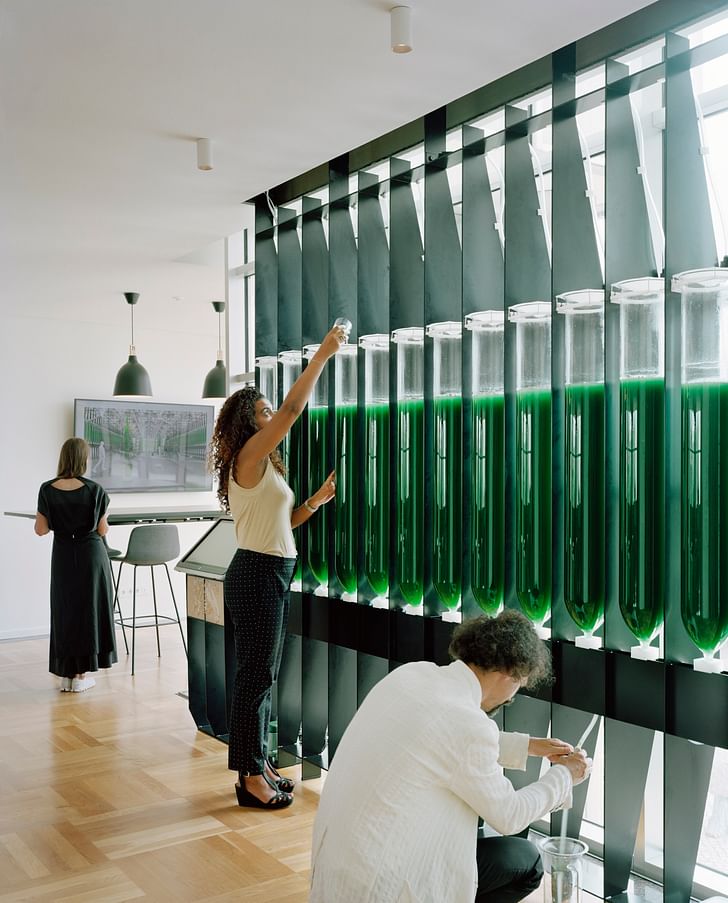
Despite the varied scales, manifestations, and architectural scenarios in which you deploy Photosynthetica, the system always depends on three layers: hardware, software, and wetware. Could we unpack each of these three layers and how they contribute to the system?
Marco: We often start with wetware because that’s the living, metabolically active component. Our wetware is microalgae. People often think of microalgae as a single thing, but we must remember that it is an entire ecosystem. There are tens, maybe even hundreds of thousands of species, all with different properties, strengths, environmental contexts, colors, appearances, and, once you harvest them, different uses. Once you understand these different properties, you can enter a discussion on architectural and urban design applications.
Microorganisms are so tiny that you can design an entire world for them in a limited architectural space. — Marco Poletto
Our façade curtain application captured wide attention because of how easy it was for architects to identify with a building envelope that is photosynthetic and active like a living organism. But we have demonstrated that the same system has valuable applications in many other architectural configurations. This is where hardware enters the discussion. For us, hardware is the architectural component: The artificial habitat in which the algae can grow.
Microorganisms are so tiny that you can design an entire world for them in a limited architectural space. It is much harder to do that with trees or plants, and even when you install a pot of soil, it is still nothing compared to what the plant could achieve in a forest. For microalgae, however, a small reactor is enough for a complex world to grow. Hardware also means designing the system to allow for a flow or exchange between gasses and liquid, as well as the correct amount of insulation and radiation. Today, our hardware includes glass reactors, biopolymer reactors, and plastic membranes, but we are excited to continue experimenting with 3D printing technology. With 3D printing, a new micro-scale of hardware is unlocked, which can incorporate finer resolution of surface porosity and articulation.
Claudia: This is an important example of how ‘intelligence’ manifests in our work. It is not just about deploying the microalgae but how to create a relationship with an organism through the interface of architecture. This is important in a conversation about pollutant climate change. In one respect, pollutants are not inherently negative but are an element that is present in our cities as a byproduct of human society. Other organisms, such as microalgae, experience these pollutants as food or nutrients. If we can recognize such particles as part of an ecosystem, whether in air, water, or soil, we can investigate their relationships with other organisms, read their patterns, and establish a positive dynamic of change rather than a disruptive one. It is not about ‘stopping’ change but instead establishing a different type of change.
It is not just about deploying the microalgae, but how to create a relationship with an organism through the interface of architecture. — Claudia Pasquero
Marco: This is where the software component becomes important. Integrating sensors and other computational elements offers us a clearer, more specific understanding of how the wetware, hardware, and environment interact. For example, in projects such as Otrivin Air Bubble, AirLab, and AirOffice, we collaborated with Haleon Consumer Healthcare to embed sensors for the mapping and monitoring of pollutants and other particles. As Claudia says, the bottom line was not necessarily to say, “We are going to neutralize these pollutants, and the whole world will be clean,” because obviously, that is not possible. It was more about creating an interactive interface where the cleaning, filtering, and purification of these particles also become an instrument to raise awareness and understanding of how the urban microbiome can manifest, and how we can engage with it to improve the air we breathe right now.
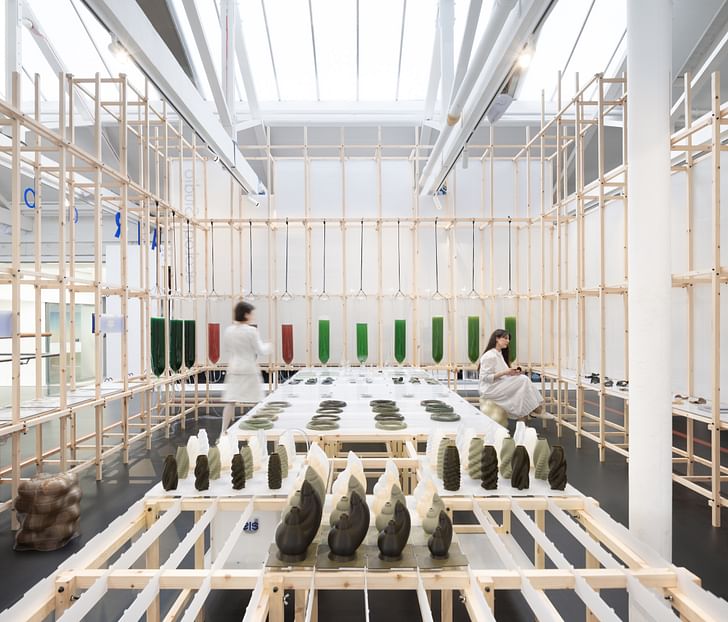
Speaking of collaborators, is there a core set of disciplines or professions that you work with for Photosynthetica, whether for projects or research?
Claudia: There is heavy input from the academic environment. We have researchers and Ph.D. students developing specific lines of research on relevant subjects across disciplines. We are sometimes asked whether we rely on the biological discipline or the computational discipline for our innovation, but this only applies if we believe the stereotype of researchers operating exclusively in their field of expertise. It is important to collaborate with other disciplines not only to share knowledge but also to re-appropriate and re-frame it across scalar and material domains. For example, when algae cultivation is concerned, biologists often work at the small scale of their lab while agronomists operate at the much larger scale of industrial algae farming. We tackle the scale of architecture, in-between and close to the human body: This fosters new research and innovative applications at an architectural scale, informed by the micro and macro but operating at the meso scale.
A similar opportunity exists with artificial intelligence. One of the reasons that ChatGPT and Midjourney dominate the architectural discourse on AI is because those are the outputs we are provided with by the AI industry, and that is what we end up equating with AI. However, if you engage a computer scientist, you have the opportunity to customize the technology for your own framework rather than working with end products such as Midjourney. By customizing machine learning algorithms, we can develop new knowledge specific to our research on architectural ecology. This point about considering AI not as an off-the-shelf product but as an element to be understood, reframed, reincorporated, and repurposed is crucial to its future evolution.
If you engage a computer scientist, you have the opportunity to customize the technology for your own framework rather than working with end products such as Midjourney. — Claudia Pasquero
Marco: Our work on urban ecology has added an interesting dimension to AI. If you look at how intelligence operates in living systems and organisms, especially at the scale of the urban microbiome, you find organisms without nervous systems or central cognitive apparatus. You begin to realize that their way of computing and “thinking” is happening through different media. They have constant exchanges with their surrounding environment that allows them to make decisions, survive, adapt, evolve, and proliferate. They operate through a form of distributed and embedded material intelligence, in consort with a medium. This opens up an interesting line of exploration for us in architecture and urbanism because we recognized that cities themselves are large organisms that continuously exchange with their surrounding environment, indeed a complex form of AI.
This actually brings us to the second half of your book, which presents a series of more speculative projects that go beyond Photosynthetica and instead explore alternative architectural and urban environments grounded in ecological and computational principles. Could we unpack the limitations of cities today in this context, and your speculations on the future?
Marco: Cities today are designed in a completely different way to what you see in the ecological organizational processes found in a slime mold organism. Planning processes are not able to establish any kind of feedback that can automatically adjust itself or self-organize in response to scarcity or overabundance of resources. The result is an urban environment whose users are rapidly depleting all available resources without the awareness that comes from direct material feedback within the Urbansphere.
One of the important repercussions of AI is that it causes us to question the role of the creative mind of the designer. — Marco Poletto
When we talk about smart cities, we often do so from the limited conceptual framework of the human mind; one that is constrained by the culture and technology of the time. One of the important repercussions of AI is that it causes us to question the role of the creative mind of the designer. I think this is an exciting question because I am convinced that the current ecological crisis is very much connected to our limited understanding of our own position in the world, our own creative intelligence, and the nature of that creativity. We need to expand that understanding, and I believe AI offers an opportunity to do that, but only if we utilize it critically. This is the big ‘if’ of the moment, I believe.
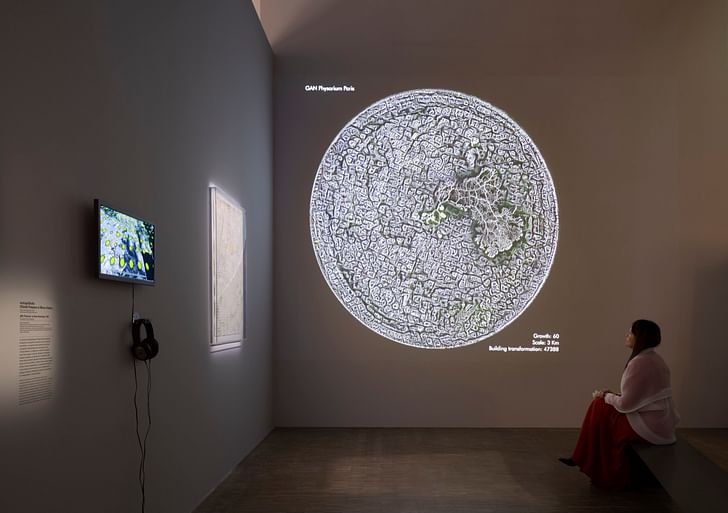
This brings us to some of our own speculations on embedded intelligence. For the project GAN Physarum: La Derive Numerique, for example, we trained a machine learning algorithm known as a GAN (generative adversarial network) to behave like a living single-celled slime mold named Physarum Polycephalum. The so-called GAN Physarum is sent on a journey through Paris in which it decodes and reinterprets the urban fabric in a way that addresses urban re-metabolization, carbon neutrality, energetic self-sufficiency, and increased biodiversity. As these urban design objectives are achieved in a non-human framework, the project uncovers a whole new palette of possible solutions in urban design.
I am talking about a more profound way of helping rethink how the city of the future should look, how it should behave, and what it should be made from. — Marco Poletto
In that case, we were quite literal in creating an apparatus where this slime mold becomes a city-making system, along with all the necessary interfaces for this type of feedback to happen in real-time and in real life. Of course, we are talking about a major leap in scale, but when you look at it from an ‘intelligence’ perspective, we already have monitoring systems like satellites that can extract information from cities in real-time. Let’s say we feed this information to the habitat of the slime mold to grow on, and it will “know” about it and respond in real-time. And the behavioral response of the slime mold can be captured and interpreted using AI, thus closing the loop of communication across scales. GAN algorithms, for example, have exciting potential for creating direct feedback in real-time so that we can begin to read urban infrastructure and urban development patterns as new forms of intelligence. I’m not just talking about traffic optimization or autonomous vehicle management, like what we often see in smart city discourse. Instead, I am talking about a more profound way of rethinking how the city of the future should look, how it should behave, and what it should be made of.
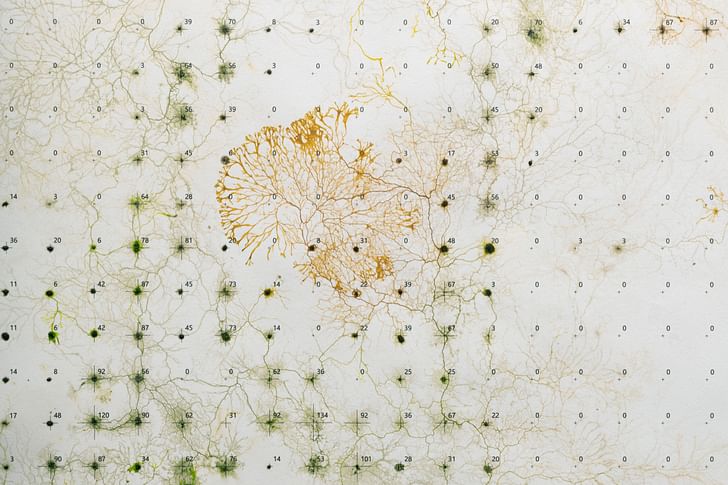
The idea of wetware, with its softness and liquidity, helps us materialize these more speculative visions. As part of the Tallinn Biennale of Architecture in 2017, for example, Claudia curated a project called Tallinn Wet City. Recognizing that at least part of the territory of Tallinn will be submerged in 30 years and will literally become a ‘wet city,’ we saw an opportunity to depart from the traditional approach of building a sea wall to keep the water out. What if wetware was another layer of infrastructure that could potentially be more fluid and full of life? How does that create the possibility for a truly sustainable city in terms of how it operates and how it embeds its own intelligence into the microbiome of the Baltic Sea?
So again, while 99% of the paradigm of smart cities is about software for city management, we are trying to recast the discussion as one about landscapes, resources, the morphology of the city, and its material reality. It is a vital conversation to have, and architects and designers are probably the only ones in the position to bring it up and push it forward.
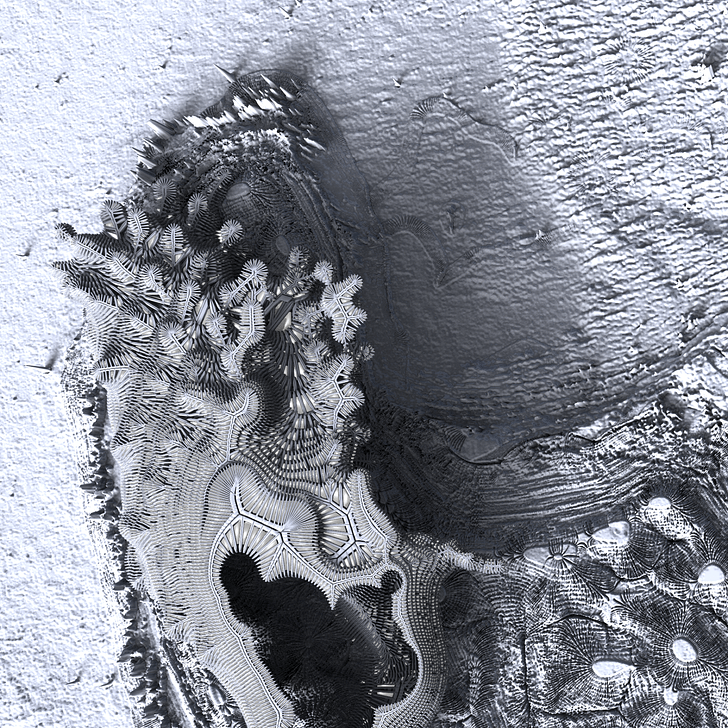
These exercises in recasting, reframing, and redefining are a constant presence in your work. Just today, we have touched on it through the lens of climate, smart cities, and of course, artificial intelligence. As you mentioned earlier, many of us today view AI mostly through the lens of end products such as ChatGPT, or perhaps underlying models such as LLMs, but your work invites us to expand our definition of what artificial intelligence entails. It isn’t just computer software or computation. It can also manifest through an ecological avenue. Non-human intelligence can be adapted and repurposed through many different forms, and more exciting still, there are probably many more forms out there that we haven’t thought of yet.
Marco: I would even go one step further and say that it is crucial to design the way these software evolve. As many will know, the training of algorithms is a crucial component of AI, which involves multiple systems as part of the training apparatus, including humans. AI is largely trained and developed in lab conditions to perform tasks that revolve around how we can extract data or resources from environmental systems, animal or human systems. For example, in the pig farming industry in China, AI is trained to enable incredibly dense, compact farming systems where millions of pigs are grown in artificial environments with their health and behavior constantly monitored and optimized.
The only way that AI or similar technologies are going to become a force toward a sustainable, carbon-neutral world is if they are taught to understand ecological systems. — Marco Poletto
The only way that AI or similar technologies are going to become a force toward a sustainable, carbon-neutral world is if they are taught to understand ecological systems. At the moment, as with the pig farm example, we are using AI like the mechanical machines of the first industrial revolution. The material components might be different, but the cultural framing is the same. I believe that there is both an opportunity and urgency for architects, designers, and artists to challenge this. I see it as the factor which will most heavily affect the impact that AI will have on the future, and whether it will be a positive or negative impact on our own civilization.
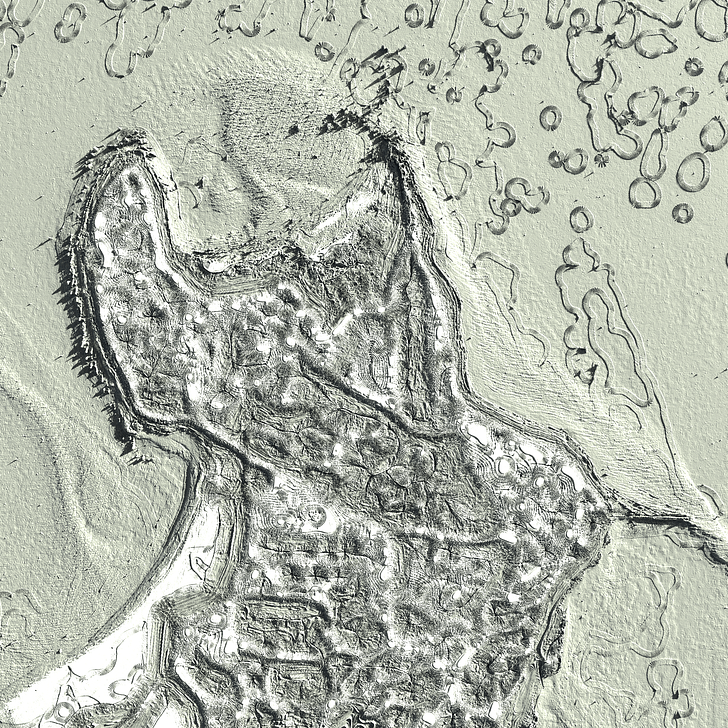
Amidst everything we have talked about today, what is one final message or reflection you want to give readers on the topics of computation, ecology, and architecture?
Marco: At the beginning of the conversation, Claudia mentioned patterns and the idea of patterns as a meta-language. We often like to say that beauty is a measure of ecological intelligence. In some ways, this is a provocation. However, there is a deeper truth, we believe, in the idea that when you look at living systems, their often beautifully intricate patterns are very much an expression of their own inner way of "thinking," or their cognitive systems. In the world of design, innovation, and technology, we should try to apply that logic as well. In our business, beauty is often seen as extravagant, not a core value of ecological thinking. Instead, we try to look at beauty or aesthetics as the meta-language that brings us closer to understanding the ecological intelligence of a design system.
Aesthetic and visual languages are part of our own evolutionary system as humans, as well as part of the non-human training of AI or the evolution of living non-human organisms. — Claudia Pasquero
Claudia: That is an essential part of connecting multiple systems ecologically, which is something we often fail to do today. In fact, aesthetic and visual languages are part of our own evolutionary system as humans, as well as part of the non-human training of AI or the evolution of living non-human organisms. Aesthetic and visual languages are inherent in our ability to develop connections with the living world and in overcoming the problematic segregation and optimization of individual segments of reality. This is an important aspect for designers and architects in particular which, if embraced, will give us greater agency. We have the opportunity to lead the development of a more connected world and envision a new ecology and, eventually, a new human. One that can operate systemically without the necessity to define logically which segment or reality it belongs.
Niall Patrick Walsh is an architect and journalist, living in Belfast, Ireland. He writes feature articles for Archinect and leads the Archinect In-Depth series. He is also a licensed architect in the UK and Ireland, having previously worked at BDP, one of the largest design + ...
No Comments
Block this user
Are you sure you want to block this user and hide all related comments throughout the site?
Archinect
This is your first comment on Archinect. Your comment will be visible once approved.